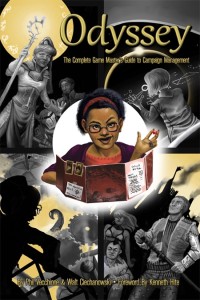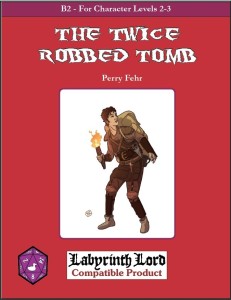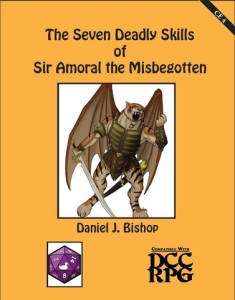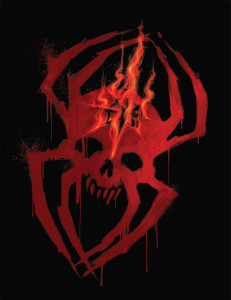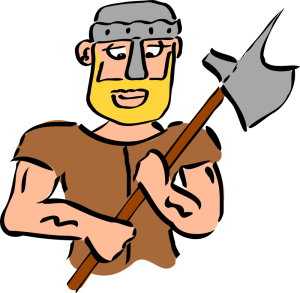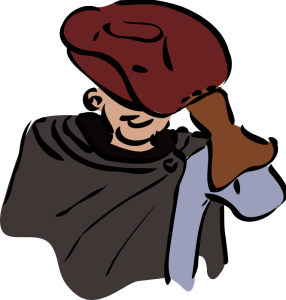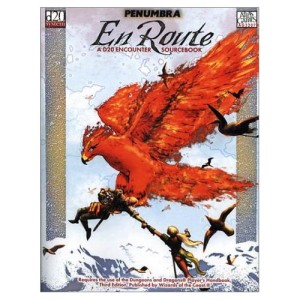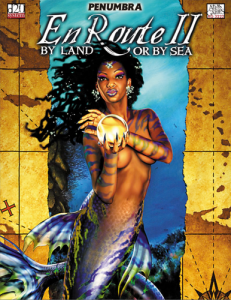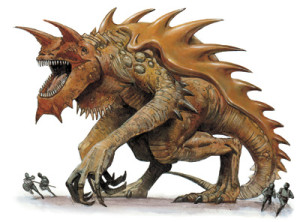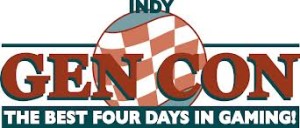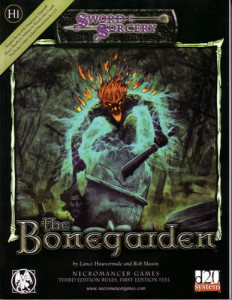 Necromancer games hit the ground running back in the early days of third edition D&D. Not many companies had a clear direction with their products. Very simply they had the slogan “Third Edition Rules, First Edition Feel” and they lived up to that. Their adventures were usually longer and more in-depth than others being produced at the time. Their adventures also were a bit more out there and had unusual and creative backdrops. For my fifth New Classic line of blog posts I look at the Bonegarden, a sandbox style module written for third edition D&D but easily converted into other systems.
Necromancer games hit the ground running back in the early days of third edition D&D. Not many companies had a clear direction with their products. Very simply they had the slogan “Third Edition Rules, First Edition Feel” and they lived up to that. Their adventures were usually longer and more in-depth than others being produced at the time. Their adventures also were a bit more out there and had unusual and creative backdrops. For my fifth New Classic line of blog posts I look at the Bonegarden, a sandbox style module written for third edition D&D but easily converted into other systems.
The great thing about Bonegarden is the multiple ways it can be used. There is not a plot or assumed path for the module. There is no one hook that bring the PCs into the place. The module is designed for characters of about twelfth to fourteenth level, but with different encounter areas it could be used as a difficult place for lower level characters that just need to get in and out with no need for dealing with the whole place. The Bonegarden is a very large cemetery. It is surrounded by a magical field that keeps the undead contained but also makes it difficult for characters to get out. Undead in the Bonegarden are more powerful than those elsewhere and the module covers the reasons for this. The part that makes the Bonegarden especially deadly is that every night all the undead that were destroyed in the previous twenty four hours come back to unlife, so to speak.
The one hundred and twenty eight page module is filled with undead. There is a wide variety of them here including many new ones that were in the Tome of Horrors. There are fifteen new creatures and templates in the book. My favorite is the undead mimic. Mimics are always fun and having an undead version is clever, as when players are thinking undead they usually are not thinking about mimics. There are some new feat options and spells in here, but the new magical items are more interesting. The Pieces of Her Heart is a sad artifact with a unique history and it offers interesting abilities as one collects the different pieces of this broken heart.
Inside the Bonegarden there are many different encounter areas. The module has wandering monster tables and is one of the few modules that I think makes really good use of them. There are all types of generic undead one can encounter in here and the undead always come back. Many of the different encounter areas have their own hooks. This can make them easy to use sections without the need to use the whole module. There are also plenty of empty areas a DM can insert in their own encounters and buildings with their own undead creations.
Not everything in the Bonegarden is dead though. There is a group of survivors that use one of the buildings as a place of protection. They are dying off slowly but the group is using smart tactics to stay alive. They are not the oddest thing in there either. There is a large spaceship of fantastic design that has crashed there. One could easily make it an ancient spelljammer or something more like the tech of Numeria from the Pathfinder setting.
Like most of the books I look at, this one never seemed to get its due when published. Now one can easily find a copy for less than ten dollars. It was a fun module when I ran it for my group many years ago. There is a lot of things going on but nothing so complex or so huge that is overshadows everything else. It is a great undead sandbox adventure.
Chris Gath. I’ve been gaming since 1980 playing all kinds of games since then. In the past year I’ve run Pathfinder, Dungeon Crawl Classic, Paranoia, and Mini d6. My current campaign is mini d6 and we are using that for a modern supernatural conspiracy investigative game. On some forums I’m known as Crothian and I’ve written a few hundred reviews though I took a sabbatical from reviewing for a few years as it burnt me out. I was also an judge for the Gen Con awards (ENnies) six times. Jeff, the owner of this blog, is one of my players and a good friend.

